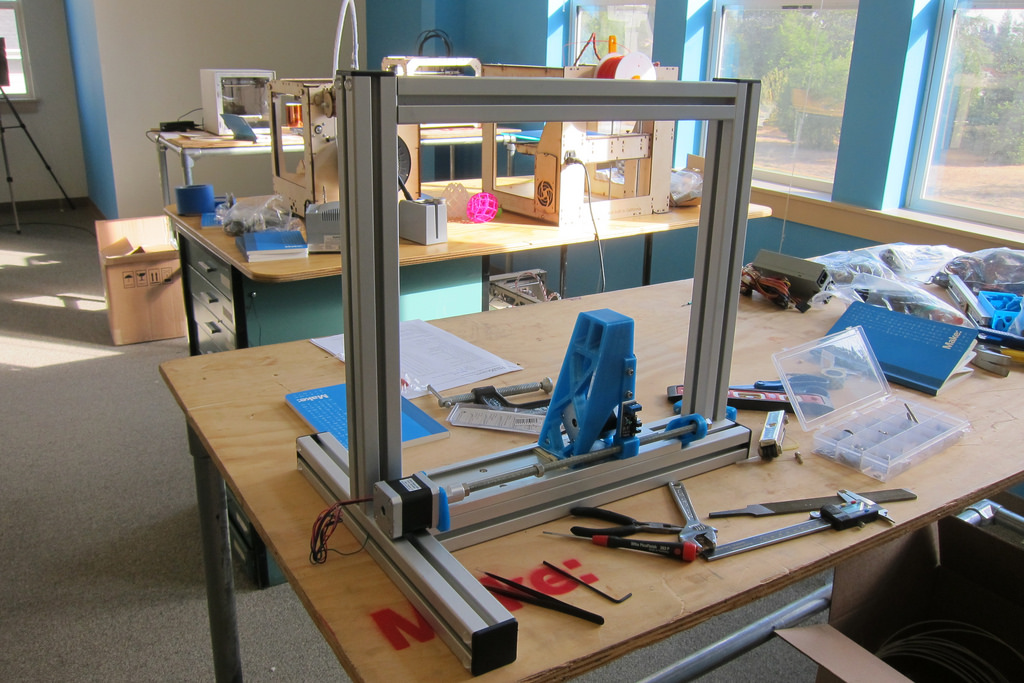Should You Buy a Used 3D Printer?
The main reason why so many manufacturers and amateur inventors hesitate to buy a 3D printer is because the technology is still quite expensive. A highly quality printer with all the accessories and specialized features can set you back a tens of thousand dollars. One way that 3D print enthusiasts have got around this dilemma of high cost is by buying used 3D printers.
A used printer is usually sold at much lower rates than the original price. That fact alone is enough to encourage makers to look for used printers. But low cost should not be the only deciding factor if you’re looking for a bargain. Let’s take a look at some of the questions you should ask yourself before buying a used 3D printer.
Desktop or Industrial
There are two main types of 3D printer models available on the market today. One is for 3D print hobbyists who want a more compact printer design that can be kept inside homes to create smaller 3D Models and prototypes. The other is industrial grade printers that are much larger in size and able to create much bigger models and operate for longer periods of time without breaking down from overuse.
Depending on the kind of work you want to get out of your printer, whether you are buying the printer for your home or your factory, you can choose to buy a desktop model or an industrial model. The industrial grade printer costs more, but it can also in general handle more heavy-duty work.
Reasons for Selling
Ask the seller why he or she is willing to sell you the printer at a reduced costs. Is it because the seller no longer has a need for the printer, because it did not match up to their needs, or because there is something wrong with the printer that cannot be fixed? There can be many possible reasons for selling a printer. If the reason has something to do with the printer’s sub-standard performance, you might want to look elsewhere for a better model.
State of the Printer
Before paying the money, make sure to carry out a full inspection of the machine. One danger that is always attached to buying second-hand goods is that the product may be hiding some flaws that only become apparent after the item has been bought. You can get an expert to check out the printer for you, or you can carry out the inspection yourself by going over the following points:
- Turn the power off and check to see if the print head can be easily moved by hand. This will help make sure the movable part of the printer is able to travel freely and isn’t bogged down by broken parts.
- Examine the frame of the printer to see if it is damaged.
- Ask if you can print out a basic model using the printer. Watch carefully as the machine operates to see that all the functions are being carried out successfully and every part of the machine is operating as it’s supposed to. Once the model gets printed, measure it with a caliper to make sure all the dimensions are accurate.
- Run the printer using all its various functions, like the fast speed setting and change the filament to detect any problems with its operation.
- The print head of the printer is the part of the machine that undergoes the most wear and tear. Check to see if any gunge is getting extruded. Replacing the print head may be a good idea for a fresh start with the used printer.
- While the printer is working, make sure that the heat is getting evenly distributed.
- Ask as many questions as you can think of about the printer’s history. Ask about any upgrades or repairs that took place and who to turn to for technical support in the future if something goes wrong with the device.
Where did you find the Printer
Another important factor is the place from where you get the printer. Being an expensive device, it would be unwise to buy it off the internet without any background checks first. There are some sites that specialize in offering second-hand equipment with extensive background checks and seller assurances. Ebay is the most popular example. Even then, it is up to you to make inquiries on your own about the state of the machine and why the owner wants to sell it.
Your best bet would be to get in touch with someone in your local area who has access to the machine and is willing to sell it. Ask around in your circle if you have any engineering friends who might know where a second-hand desktop model can be found. Craigslist is a great place to begin. You can also visit factories which make use of 3D modeling and ask them if they’re looking to sell one of their printers.
FDM or FFF
A Fused Deposition Modeling (FDM) printer is most likely a closed source machine. This is because FDM is a patented model, which means information relating to the upkeep and specifications of the model are not made available to the general public. This can make getting the printer repaired or body parts replaced much more difficult.
On the other hand, a Fused Filament Fabrication (FFF) model has no patent on its design and is described as an open source machine. This means the information relating to its build is available to the public which makes it easier to get the printer repaired or its parts replaced.
These are general guidelines, and it’s not absolutely necessary that a FDM model be patented and closed source. That is why the best plan would be to ask the previous owner about the machine and whether it can be fixed by companies other than the manufacturer of the original device. You don’t want to get stuck with a printer that refuses to work because you can’t find a special part that only one manufacturer makes.
Repairs and Upgrades
One thing that can raise the price of the printer is if the previous owner made any modifications or upgrades to the original device out of their own pocket. The owner may then fix a price for the printer that takes into account the price of the upgrades. It is now up to you to decide if you want to buy the original device along with its upgrade, or if the owner is willing to sell you the printer without the upgrade.
Also, take a look at the number of repairs that went into keeping the machine working. A high number of repairs either means the original device was not a very good product, or that the device now works better than ever after some solid repair work. The printer owner may decide to add in the cost of the repairs into the final asking price.
So now you know what goes into buying a used printer other than the price of the machine. Keep the above-mentioned points in mind, and you will be able to get a solid piece of 3D print machinery without having to pay an exorbitant amount for brand new equipment.








Hello,
I want to buy refurbish 3d printer do you have any available ..?
Yes. We have a 3D printer. It has been used for only 2-3 months only.Its in awesome condition. Want to sell it now. Other details will be discussed further if you are interested in it. Its for very nominal price.